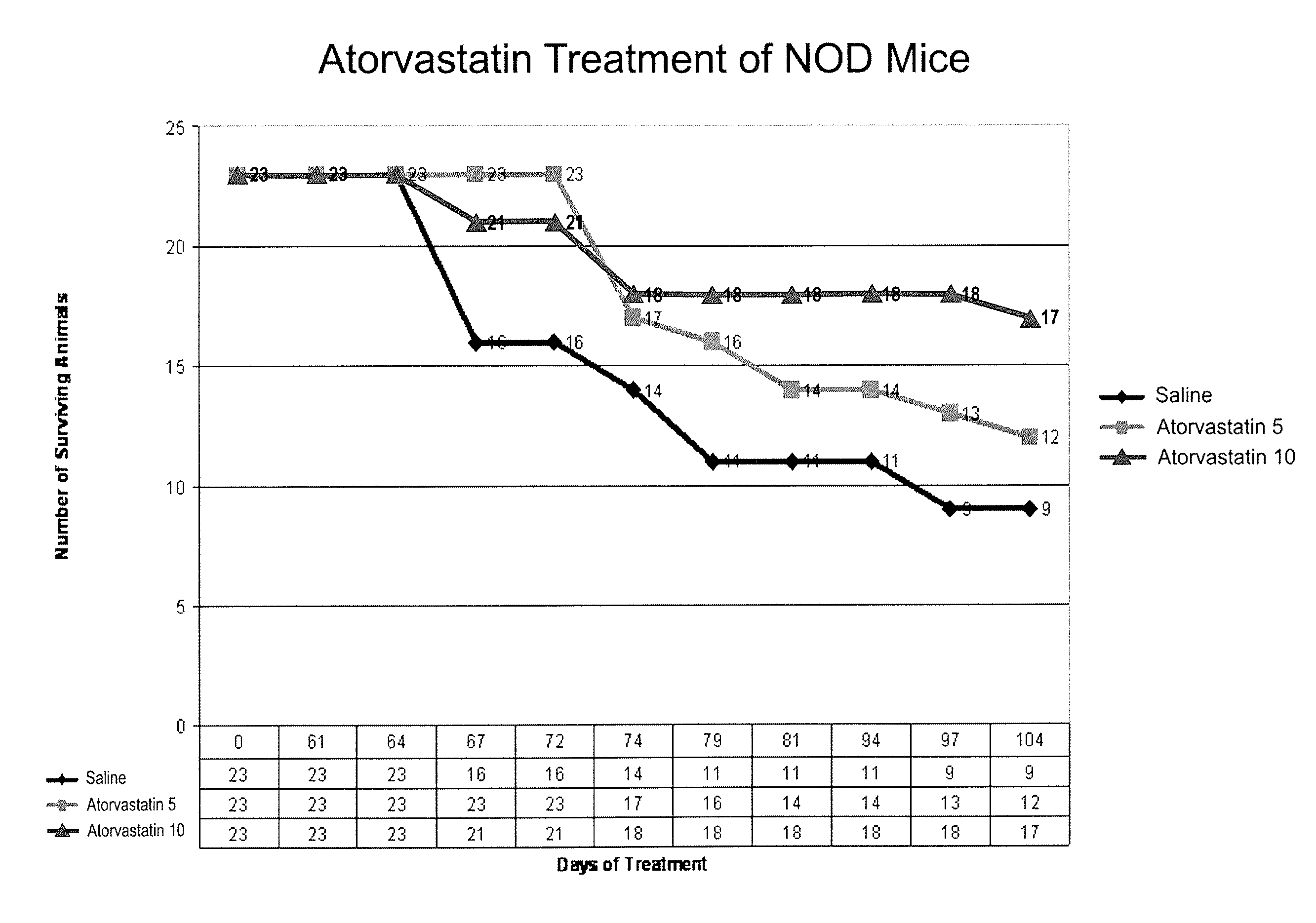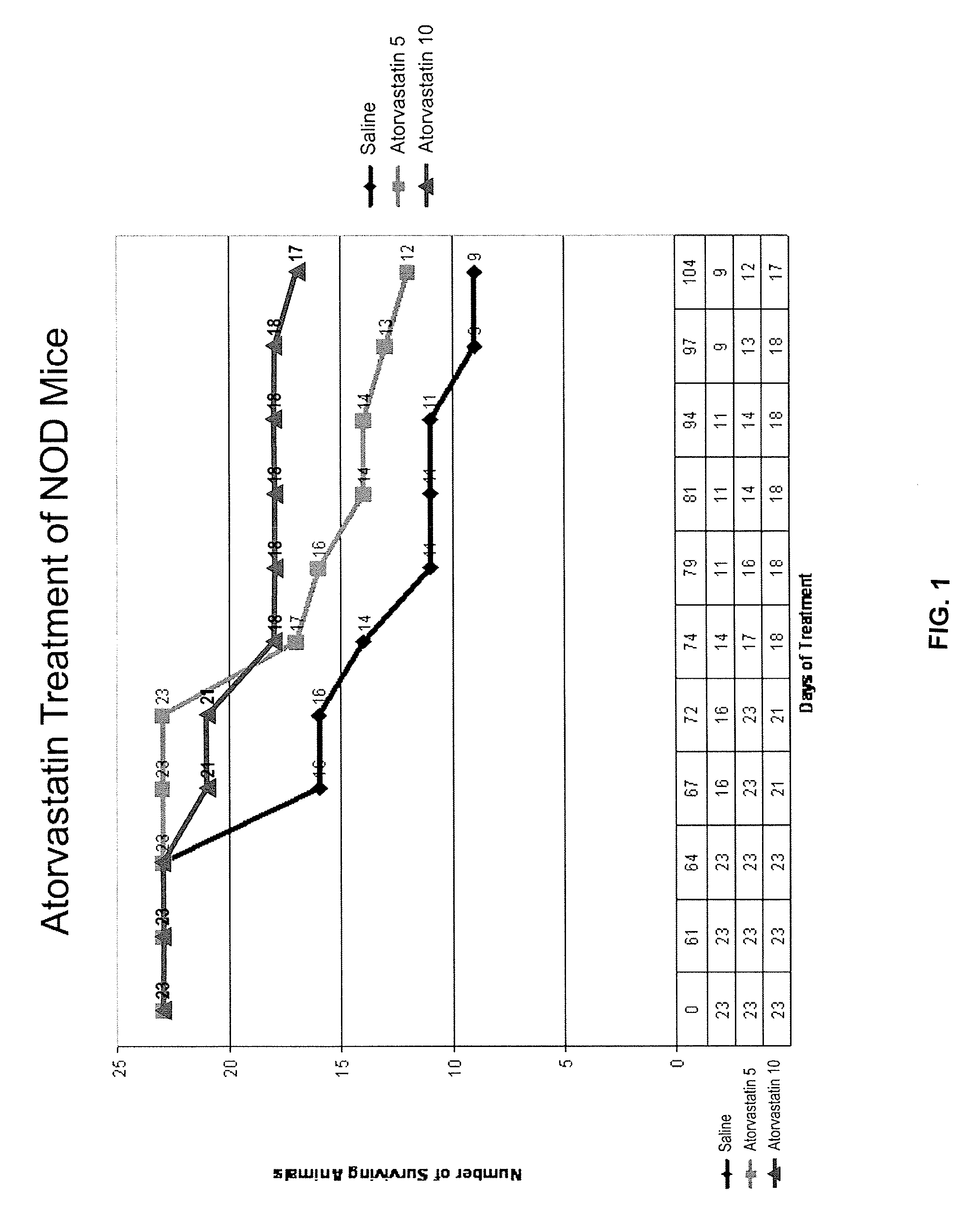Methods of treating juvenile type 1 diabetes mellitus
a type 1 diabetes and treatment method technology, applied in the field of juvenile type 1 diabetes mellitus treatment and prevention, can solve the problems of t1dm management that is not optimal, lack of insulin, and rare glycemic control, so as to improve metabolic control and quality of life, reduce chronic complications and premature death, delay or prevent the destruction of islet cells
- Summary
- Abstract
- Description
- Claims
- Application Information
AI Technical Summary
Benefits of technology
Problems solved by technology
Method used
Image
Examples
example 1
[0103]The non-obese diabetic (NOD) mouse model is the best-studied animal model of autoimmune diabetes. Although the development of diabetes in this model has certain important differences from T1DM which occurs in humans, the NOD mouse has become the standard model for investigating the pathogenesis of autoimmune diabetes, and for evaluating potential therapeutic interventions (Atkinson and Leiter, Nature America 5:601-604, 1999). Spontaneous diabetes occurs in female NOD mice and is preceded by insulitis, a lymphocytic infiltration of the pancreatic islets, which is the major histologic event occurring by 5-8 weeks in the NOD mouse (Chatenoud et al., Proc. Natl. Acad. Sci. 91:123-127, 1994).
[0104]In an initial experiment, simvastatin was administered to NOD mice, and resulted in a lower level of glucose during postnatal development (p=0.013, paired, one tailed). The study was not long enough (70 days), however, to detect a significant difference in frank diabetes (glucose>300 mg / d...
example 2
[0109]When the animals in Example 1 were sacrificed, the pancreas of the animal was harvested. Healthy control animals (control) were sacrificed on day 0 of treatment for comparison. Immunohistopathology staining of pancreas tissue sections was performed using standard methods of all group animals sacrificed on the same day. Pancreata from each group were analyzed for infiltration of macrophages (ED1) and granulocytes (GR). Immunostaining of tissue sections for ED1(A) and GR1(B) was performed, which demonstrated intense staining in the saline-treated mice for activated macrophages and neutrophils infiltrated into the pancreatic islets. No immunostaining was observed for these marker proteins in atorvastatin treated mice. In addition, animals treated with atorvastatin or AICAR show evidence that inflammatory cells are not entering pancreatic tissue. Immunoblotting by Western blot of the pancreas tissue obtained at the same time point demonstrated increased expression of iNOS and TNF-...
example 3
[0111]In another experiment, simvastatin was administered to NOD mice, and the animals were supplemented with insulin in an attempt to keep the animals from developing diabetic ketoacidosis. The study was designed to examine whether simvastatin at 2 mg / kg / day and 5 mg / kg / day protected islet cells from damage during early phases of diabetes. When the glucose level of the mice in the study rose above 130 mg / dl (upper limit of normal for mice), one unit of insulin was given to the mice once a day using Novolog® (Novo Nordisk). If the glucose level of the mice in the study rose above 150 mg / dl, then one unit of insulin was given to the mice twice a day. The animals were divided into four groups randomly. Group 1 was the control and received oral lavage of physiological saline daily, plus insulin as set forth above. Groups 2 and 3 received simvastatin at a dose of 2 mg / kg / day or 5 mg / kg / day, respectively, along with insulin as set forth above. Group 4 received no treatment with either si...
PUM
 Login to View More
Login to View More Abstract
Description
Claims
Application Information
 Login to View More
Login to View More - R&D
- Intellectual Property
- Life Sciences
- Materials
- Tech Scout
- Unparalleled Data Quality
- Higher Quality Content
- 60% Fewer Hallucinations
Browse by: Latest US Patents, China's latest patents, Technical Efficacy Thesaurus, Application Domain, Technology Topic, Popular Technical Reports.
© 2025 PatSnap. All rights reserved.Legal|Privacy policy|Modern Slavery Act Transparency Statement|Sitemap|About US| Contact US: help@patsnap.com



